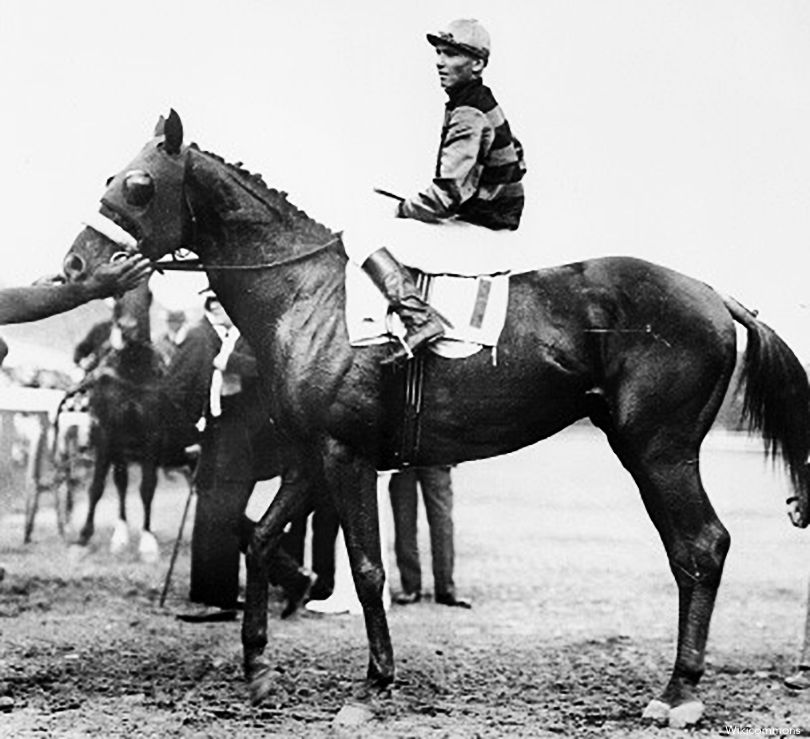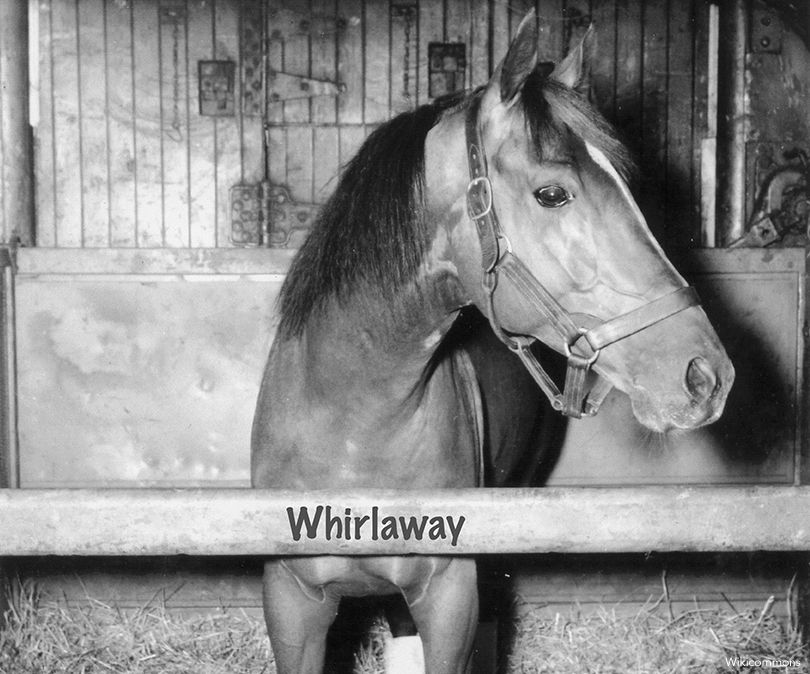When American Pharoah ended the 37-year-old Triple Crown drought in 2015, he became just the 12th horse in history to accomplish the feat. There's no question that every one of those horses was a spectacular runner -- but what became of them after the glory?
American Pharoah continued to race through the end of his 3-year-old season. In fact, the Kentucky-bred thoroughbred made multiple cross-country trips before finishing his career at the Breeder’s Cup and retiring to stud. After a few months off, American Pharoah began his breeding career earlier this spring.
While most Triple Crown winners end up standing at stud, many former winners have done more than just breed, including working for the Army, fund raising and doing a bit of traveling. Below is a look at how the other 11 Triple Crown winners spent their retirement years:
Sir Barton, 1919

Though the Triple Crown didn't exist when Sir Barton was a 3-year-old, he was recognized 29 years later as the first Triple Crown winner. Sir Barton was supposed to pace another horse in his stable, Billy Kelly, but won the Kentucky Derby by five lengths and went on to win three additional races – the Preakness, Withers and Belmont in less than a month. After that stunning performance, Sir Barton retired to stud for 13 years before taking up a second career as a working horse with the U.S. Army's Remount Service. He was stationed at Fort Robinson in Nebraska.
Gallant Fox, 1930
Likely the most prolific of all Triple Crown winners, Gallant Fox "enjoyed great success" at stud, according to Spiletta.com. Also known as "The Fox of Belair," Gallant Fox sired 20 stakes winners, including 1935 Triple Crown winner Omaha. Gallant Fox is the only U.S. Triple Crown winner to sire a U.S. Triple Crown winner (Omaha), though Affirmed sired Canadian Triple Crown winner Peteski in 1993. Gallant Fox stood at stud for 22 years before his death in 1954.
Omaha, 1935
The only Triple Crown winner to be sired by a Triple Crown winner, Omaha went on to have a successful racing career after his Triple Crown. Notably, he is the only Triple Crown winner to have raced in England, where he won his first race, the 1936 Victor Wild Stakes, by a length-and-a-half. After coming up lame nearly a year later before the 1937 Ascot Gold Cup, Omaha's British invasion ended and he made his second Atlantic crossing, this one back to Claiborne Farm in the U.S. where he sired seven stakes winners before his 1959 death.
War Admiral, 1937
War Admiral didn't resemble the giant Hollywood version of himself in the film "Seabiscuit." The Triple Crown winner appeared to tower over the tiny Seabiscuit, when in real life, the two were of comparable size and Seabiscuit, War Admiral’s nephew, was heavier. After completing his Triple Crown, War Admiral went on to one of the most successful stud careers in history, siring 40 stakes winners. He died in 1959, the same year as previous Triple Crown winner Omaha.
Whirlaway, 1941

Not considered the brightest horse in the barn, Whirlaway became the all-time money-leader with $561,161 in stakes earnings. His trainer, Ben A. Jones, according to the Belmont Stakes site, called him "dumb, stupid and crazy," but Whirlaway was much more than that. He was the first Triple Crown winner to win the Travers, and the following season he continued racing to raise funds for war bonds. Whirlaway drummed up $5 million for the war effort before retiring to sire as a 5-year-old. Six years later, Whirlaway moved to France, where he stood at stud until dying of a heart attack in 1953.
Count Fleet, 1943
The brown colt held a Belmont Stakes record for 30 years with his 25-length victory – and he is yet another horse who won not three, but four major stakes races in about a month, according to TripleCrownRaces.com. Between the Preakness and the Belmont, Count Fleet won the Withers, as well. After earning his Triple Crown, Count Fleet took a year off to heal from an injury sustained at the Belmont before retiring to stud. Among his progeny were 38 stakes winners, including Kentucky Derby winner Count Turf and Belmont winners Counterpoint and One Count. He lived to the ripe old age of 33.
Assault, 1946
Despite being injury prone (stepped on a stake as a foal) and often sickly, Assault managed to win a Triple Crown, but failed at stud. His Triple Crown jockey, Warren Mehrtens said the horse "was all heart." Though he walked and trotted with a limp from that childhood injury, Assault galloped "true." Known as "The Club-Footed Comet," Assault went to have a successful 4-year-old season, but after multiple races out of the money as a 5-year-old, he was retired to stud, though he was found to be sterile, according to TripleCrownRaces.com. His owners put Assault back on the racetrack in 1951, when he finished 1-2-3 in three races, before being retired in 1950 to a life of leisure at King Ranch, where he was born, until his death in 1971.
Citation, 1948
Known in racing circles as "The Big Cy," the Triple Crown was really just the start of Citation’s racing career. After convincingly winning the Triple Crown, Citation went on to successful 4- and 5-year-old seasons, after which he should have retired. But Calumet Farm owner Warren Wright wanted Citation to become the first $1 million horse. To honor his late owner's wishes, Citation raced through his 6-year-old season, crossing the $1 million mark in earnings in 1951. He retired to stud at Calumet Farms after that season. He had limited success, siring only two horses of note -- Silver Spoon and Fabius -- before his death in 1970.
Secretariat, 1973
Besides ending a 25-year Triple Crown drought, Secretariat, also known as "Big Red," was the most dominating racehorse in a century, winning all three Triple Crown races in record time. All of those records still stand. Secretariat’s breeding rights were sold before he won the Triple Crown and, as such, he finished out his 3-year-old season before retiring to stud. In an interesting twist, Secretariat was prolific – he sired some 600 foals – but his successful progeny, for the most part, were mares. After Secretariat was euthanized due to a painful hoof condition in 1989, the vet who performed the necropsy estimated Secretariat’s heart to be 2.75 times as large as that of an average horse.
Seattle Slew, 1977
While Secretariat was known as the most dominant horse in racing, Seattle Slew remains the only Triple Crown winner to go undefeated leading into and through the Triple Crown races. Unfortunately, after all the exertion, Seattle Slew was worn out and missed the end of his 3-three-old season battling fatigue and injury/illness. In 1978, according to TripleCrownWinners.com, his condition worsened as he refused food, got the sweats and sometimes fell when he tried to stand. But Seattle Slew recovered and went on to race in the second half of 1978, including a famed match-up against that year's Triple Crown winner, Affirmed. Seattle Slew won. He retired to stud later that year and in 1984 was named horse racing's "leading sire" in 1984. Seattle Slew died 25 years to the day after winning the 1984 Kentucky Derby.
Affirmed, 1978
After his Triple Crown, Affirmed teamed with 1977 Triple Crown winner Seattle Slew to make history when they became the first Triple Crown winners to race against each other. Seattle Slew won the 1978 Marlboro Cup, but Affirmed went on to become the first racehorse to cross the $2 million barrier in earnings. Affirmed went on to win Horse of the Year in both 1978 and 1979 before retiring to stud at Kentucky's Jonabell Farm. Affirmed was euthanized in 2001 while suffering from a severe hoof disease.
Popular On ThePostGame:
-- Watch 9-Year-Old Football Sensation Unleash Insane Skills, Speed
-- 16 Stunning Pictures Of Stephen Curry's Home That's Listed For $3.895 Million
-- Will McDonough's Uniquely Accomplished Three Sons





